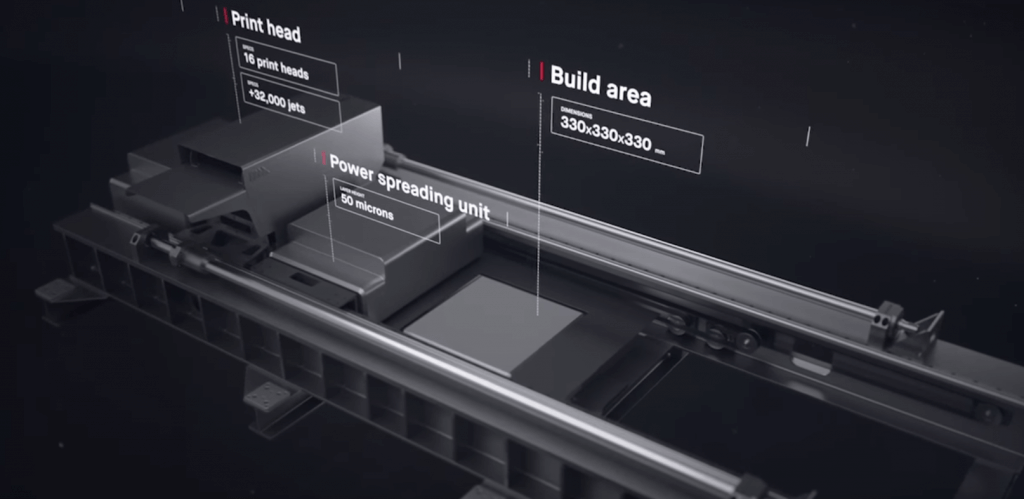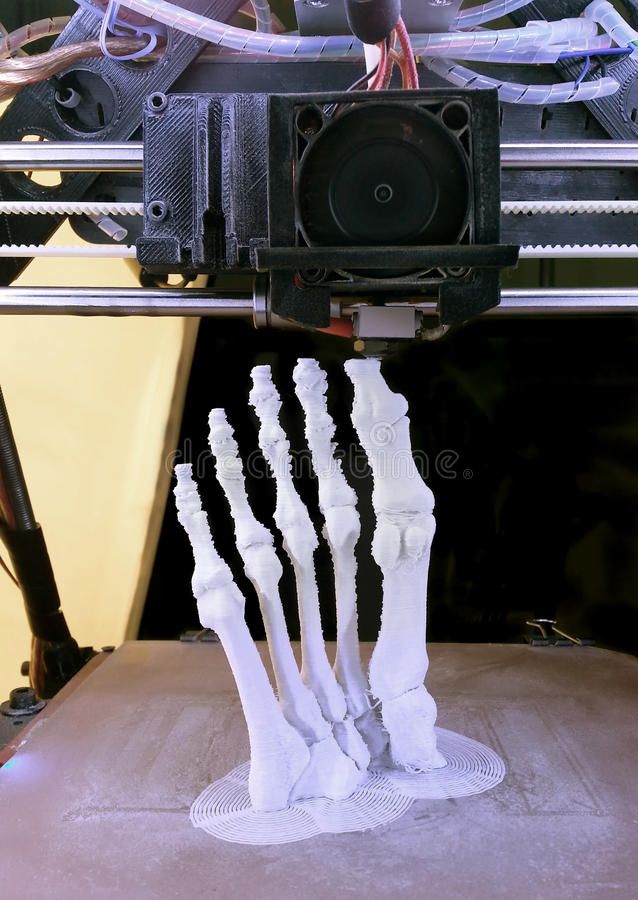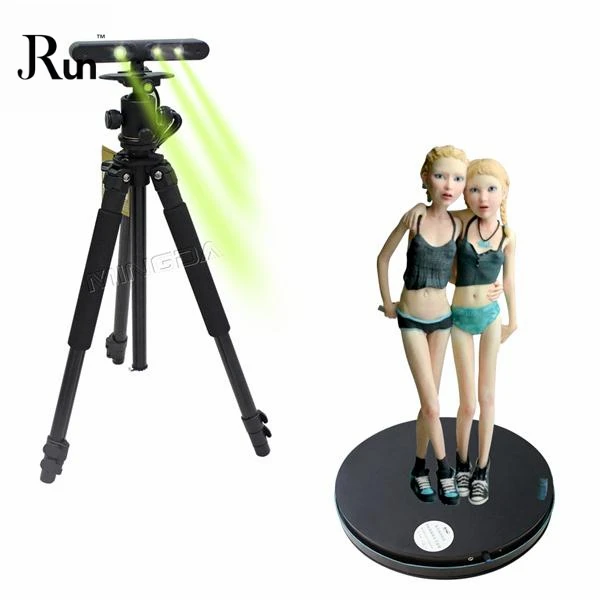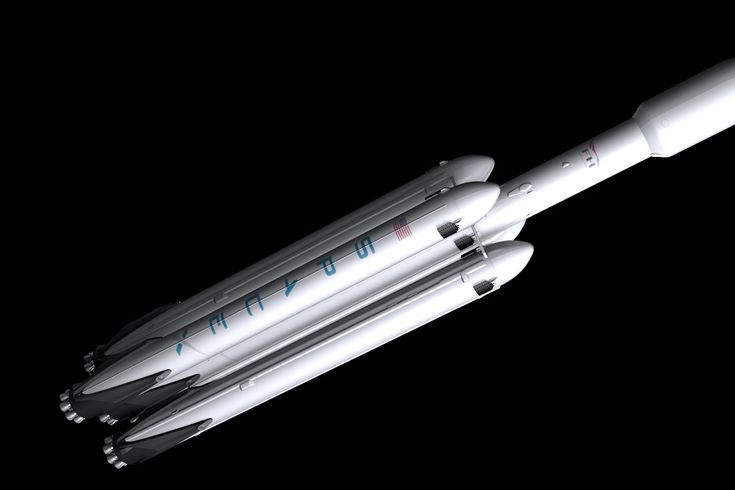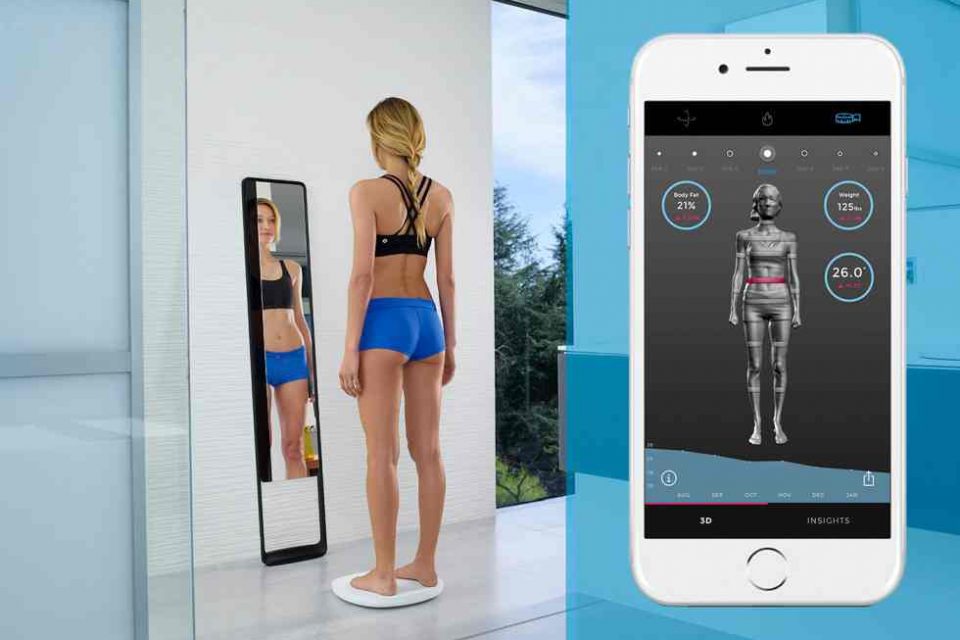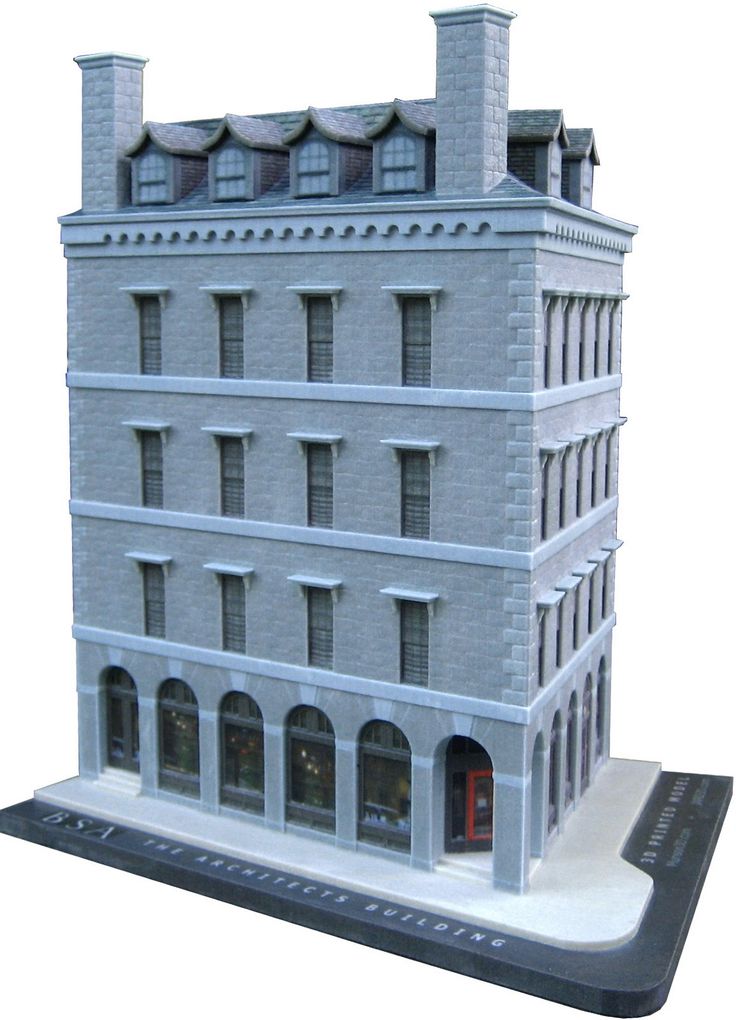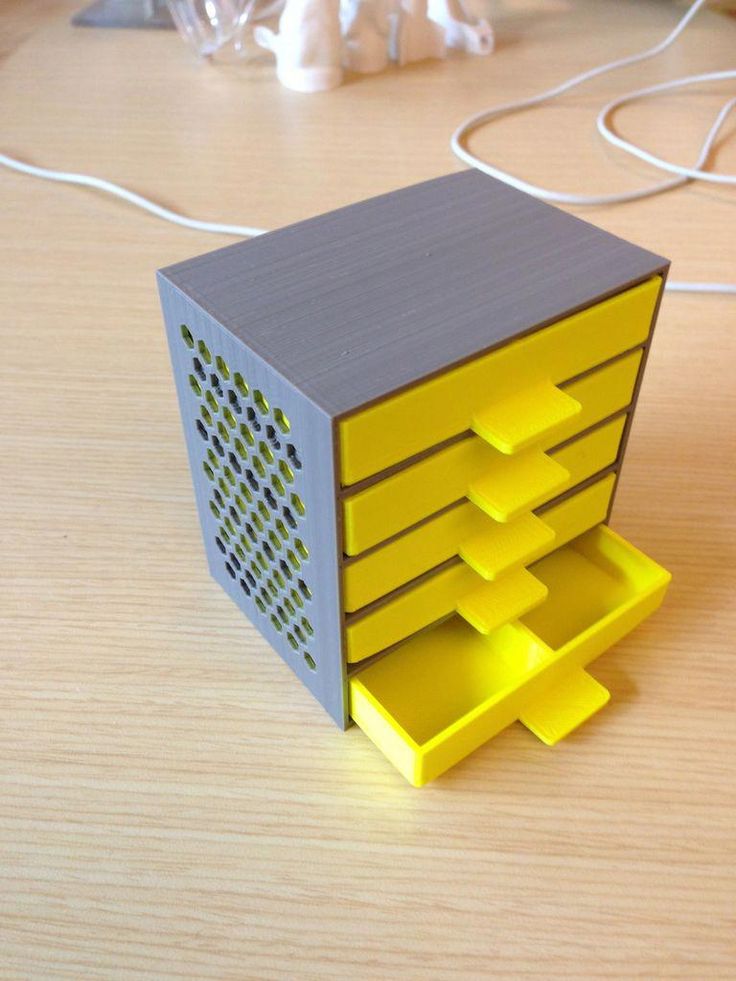Can 3d printers be used for mass production
When to use 3D printing for mass production
Additive manufacturing has come a long way since the 1980s. Though many believe the value of 3D printing lies in its prototyping capabilities, designers and engineers know that it can be helpful in other situations, notably mass production. 3D printing for mass manufacturing can unlock new products, cut costs, and accelerate production, but you must make sure it’s the best choice for your project.
When is 3D printing good for mass production?You should consider using 3D printing for mass production if:
1. You need to produce customised goods
Recent studies show that 50 percent of consumers are interested in buying customised products, and many companies are scrambling to adopt a customisation business model to meet demand. Unfortunately, mass customisation isn’t easy with a manufacturing method like injection moulding, which requires expensive tooling and a new mould for each product design.
With 3D printing, creating a personalised part is simply a matter of transferring the design data to the printer and printing it — no extra steps or new tooling required. As a result, mass-producing a customised product won’t necessarily take more time, energy, material, or money than printing a standard, non-custom product.
2.You need to start or shift production quickly
Traditional injection moulding tooling makes starting and shifting production slow and expensive. Tooling time increases lead times, whereas 3D printers can start production immediately. Plus, when shifting production, not only will your manufacturing partner need to invest more money towards creating new tooling, but you'll also have to wait for the new tooling before they can start production.
If you use 3D printing for your mass production needs, your partner can simply stop current prints, upload a different digital file, and continue production quickly instead of waiting several weeks for a new mould. Either way, you’ll be able to stay on top of changes in consumer demand and quickly rectify any design or manufacturing errors.
Either way, you’ll be able to stay on top of changes in consumer demand and quickly rectify any design or manufacturing errors.
×
Expand
Fast Radius
3. You need to meet variable demand
When faced with surges in demand, your 3D printing partner can use more printers to mass produce your parts and seamlessly accommodate higher-volume needs. Similarly, it’s easy to reduce production as demand falls or a product reaches its end of life by using fewer printers.
This also means you won’t be left with a stash of unused products whenever demand dies down, eliminating the fuel, costs, energy, and labor associated with transporting and storing products in warehouses. You can even continue to provide consumers with spare parts after a product has reached the end of its life, which wouldn’t be cost-effective with a manufacturing method like injection moulding.
4. You’re planning a low-volume production run
Executing low-volume production runs with a manufacturing method like injection moulding results in a high cost-per-part, a lower profit margin, and long lead times.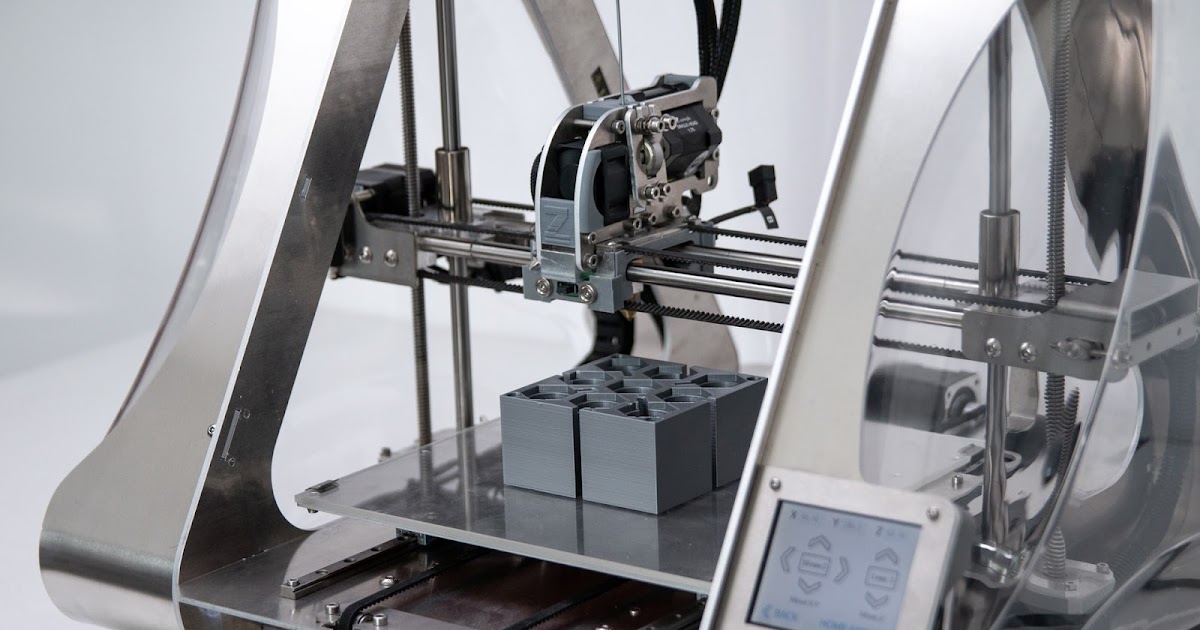 3D printing can help you bring a product to market faster, and you can produce parts cost-effectively no matter the size of your production run. When 3D printing, you won’t need to create hundreds or thousands of parts to achieve a reasonable cost-per-part, so you can start turning a profit with fewer parts.
3D printing can help you bring a product to market faster, and you can produce parts cost-effectively no matter the size of your production run. When 3D printing, you won’t need to create hundreds or thousands of parts to achieve a reasonable cost-per-part, so you can start turning a profit with fewer parts.
5. You have a complex part that would be otherwise unmakeable
Since 3D printing technology isn’t restricted by tool access, undercuts, or draft angle, additive allows you to mass-produce parts that would otherwise be impossible to make due to their geometry. For example, you can 3D print complex lattice structures to create parts with high strength-to-weight ratios, excellent shock absorption, high impact resistance, and vibration dampening. You can even create moving assemblies; hollow, walled objects; and fractals.
Plus, you can consolidate complex parts into a single design with 3D printing and eliminate the need for assembly later on.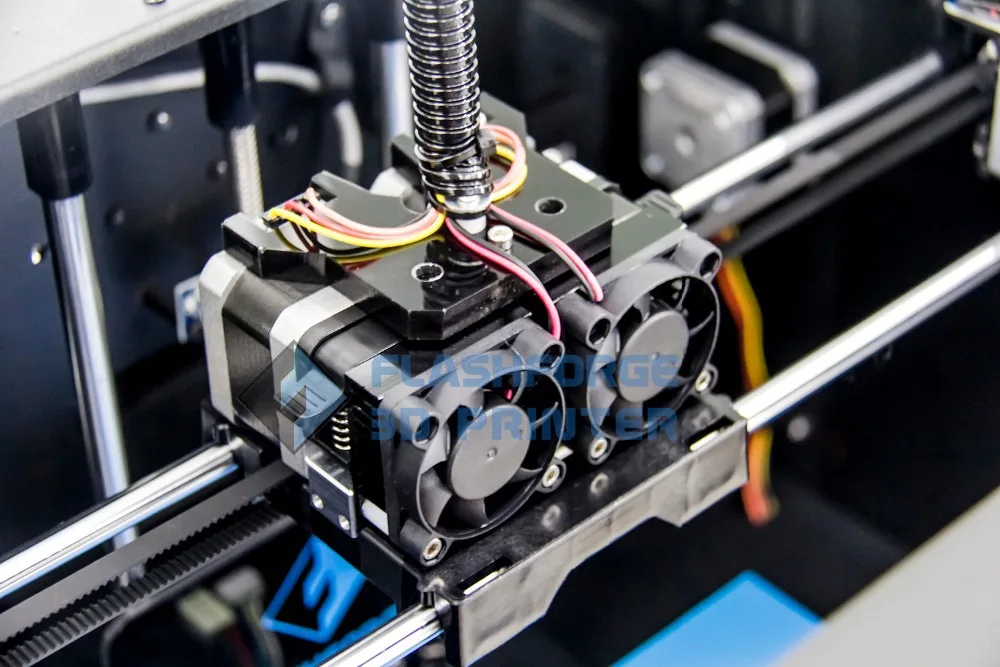 Part consolidation is less expensive, uses less material, and lowers your risk of project or supply chain delays.
Part consolidation is less expensive, uses less material, and lowers your risk of project or supply chain delays.
×
Expand
Fast Radius
Obstacles to 3D printing for mass production3D printing has the potential to revolutionise mass production, but there are still some challenges to overcome. Mass-producing products using 3D printing can be difficult for some parts because the tolerances are not as tight as can be achieved with traditional methods like CNC machining and injection moulding. 3D printing also offers more limited material options compared to traditional manufacturing processes, though many 3D printing companies have expanded their selections of cost-competitive and high-performing engineering materials over the past decade to better fit industry applications.
While many engineers know design for manufacturing (DFM) best practices for older technologies like injection moulding and CNC machining, they may not be as familiar with DFM for specific 3D printing technologies. Taking the time to develop optimised designs and manufacturing processes can improve part consistency and accuracy, as you’ll be able to reduce defects and standardise print conditions as much as possible. You’ll also want to have monitoring capabilities to identify precision problems and better control product quality.
Taking the time to develop optimised designs and manufacturing processes can improve part consistency and accuracy, as you’ll be able to reduce defects and standardise print conditions as much as possible. You’ll also want to have monitoring capabilities to identify precision problems and better control product quality.
Luckily, you don’t have to go it alone. An experienced additive manufacturing partner will have all of these tools at their disposal to ensure you get the best possible part each and every time.
Starting high-volume production with 3D printingAlthough 3D printing has become more mainstream in recent years, many product teams lack the expertise required to get the most out of these technologies. After all, the idea of using 3D printing for mass production is relatively new, so many companies hit a few roadblocks when navigating high-volume 3D printing for the first time.
A knowledgeable 3D printing partner can help you get started on the right foot.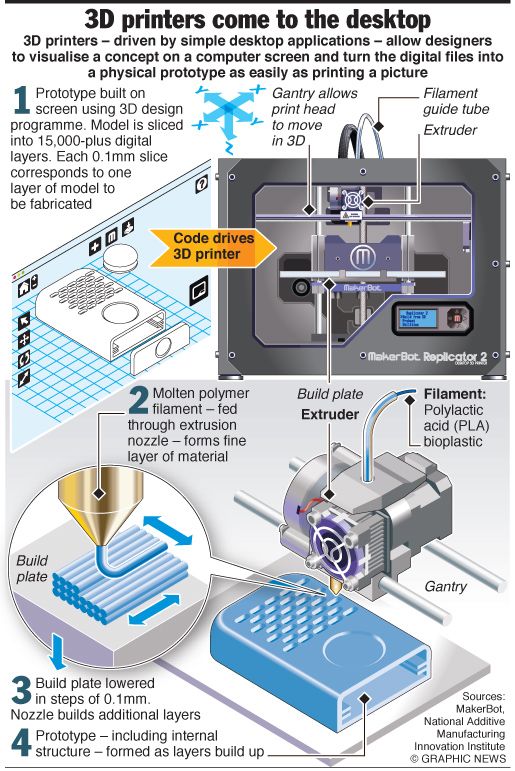 Not only will they be able to answer any questions you have, but they can help minimise errors, increase part consistency, accelerate production, and design your parts for additive. As you evaluate production partners, look for a manufacturer with a wide range of 3D printing capabilities and deep expertise in order to ensure you’re selecting the right technology for your project and fully harnessing the benefits 3D printing has to offer.
Not only will they be able to answer any questions you have, but they can help minimise errors, increase part consistency, accelerate production, and design your parts for additive. As you evaluate production partners, look for a manufacturer with a wide range of 3D printing capabilities and deep expertise in order to ensure you’re selecting the right technology for your project and fully harnessing the benefits 3D printing has to offer.
Want to discuss? Join the conversation on the Additive Manufacturing Global Community Discord.
Get your FREE print subscription to TCT Magazine.
See the latest additive manufacturing and 3D printing developments in person by joining us at RAPID + TCT in Detroit on 17-19th May and at TCT 3Sixty in Birmingham, UK on 8-9th June.
The Advantages of 3D Printing Production
3D printing is an excellent process for making prototypes and real-life products and has formed the basic call-up methods for efficiency and efficacy in production.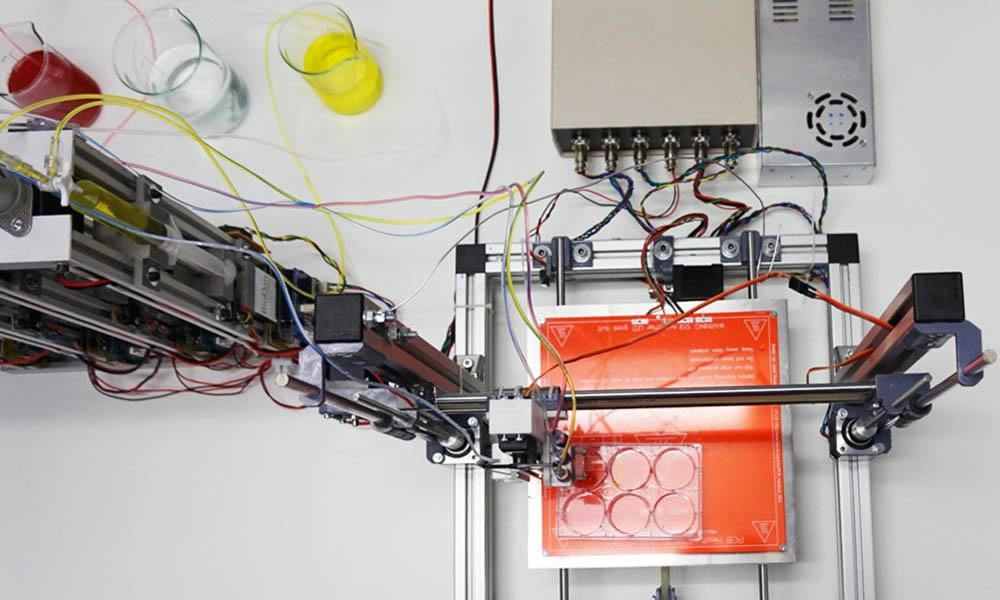 And 3D printing is positively impacting the world that has been tending towards using rapid prototyping processes in mass production.
And 3D printing is positively impacting the world that has been tending towards using rapid prototyping processes in mass production.
Therefore, it is important to know about applying 3D printing mass production, its advantages, and its various applications. This article will introduce everything you need to know about mass production using 3D printing.
The Advantages of Using 3D Printing for Mass Production3D printing is a great technique used in mass production which comes to knowing the advantages of the method. Below are the reasons that make 3D printing a better choice.
· Faster Time to Market by Rapid ToolingThe manufacturing world is highly competitive, and the time taken to reach the market can be a huge deciding factor in the success of a business. This means that the chosen manufacturing process must be able to deliver a large number of products within a short period of time. An increase in production time and delivery will improve the availability of the business’s product in the market and give them an edge competition-wise.
An increase in production time and delivery will improve the availability of the business’s product in the market and give them an edge competition-wise.
Among the manufacturing process used in rapid prototyping, 3D printing is able to produce the necessary prototypes to check for flaws and deliver in terms of the real product. 3D printing mass production is not only in making products itself but also in making entities that can help in other manufacturing processes. For example, manufacturers can use the process to make 3D printed injection molds, which helps mass production injection molding.
· Flexibility to Quickly Change What You Are MakingIn production 3D printing, manufacturers can easily change whatever they are making when there is an error or a need for a change. This trait is important in 3D printing batch production as it allows manufacturers to make prototypes by which they can check for flaws, analyze the functions of the parts, and do other things depending on the type of prototype they are working with. Consequently, it is easy for the designer to change things when they detect an error.
Consequently, it is easy for the designer to change things when they detect an error.
Performance and aesthetics are basic requirements of any growing business. Performance is in terms of product quality, while aesthetics is to attract customers. Both performance and aesthetics depend on the customization of products. Out of the different rapid prototyping processes used recently, production 3D printing is the most suitable for customization.
Depending on orders, you can delay or increase production. You can also demand a shift in 3D printing production parts’ design if there is a demand for a new type of product. Different types of materials available for 3D printing also make customization very easy.
3D Printing Materials For Mass Production PartsThere are three categories of materials in 3D printing. Each category comprises different materials with unique features and properties suitable for different products. Below are the common materials you could use.
Each category comprises different materials with unique features and properties suitable for different products. Below are the common materials you could use.
Plastics are the most common materials used in volume 3D printing. With it, it is possible to make products such as 3D-printed toys, household fixtures, desk utensils, vases, etc. Plastic materials’ popularity is due to features such as firmness, flexibility, smoothness, and color option, further improving their use in 3D production parts. We have a list of the common types of plastic polymers you can use.
· Polylactic Acid (PLA)Polylactic acid/PLA is an eco-friendly plastic made from natural products and known for its biodegradability. It occurs in two forms: soft and hard, which shows their strength. Hard PLA is the more common type in mass production due to its hardness, strength, and durability.
· Acrylonitrile Butadiene Styrene (ABS)ABS material or LEGO plastic is a plastic polymer known for its strength, firmness, and flexibility.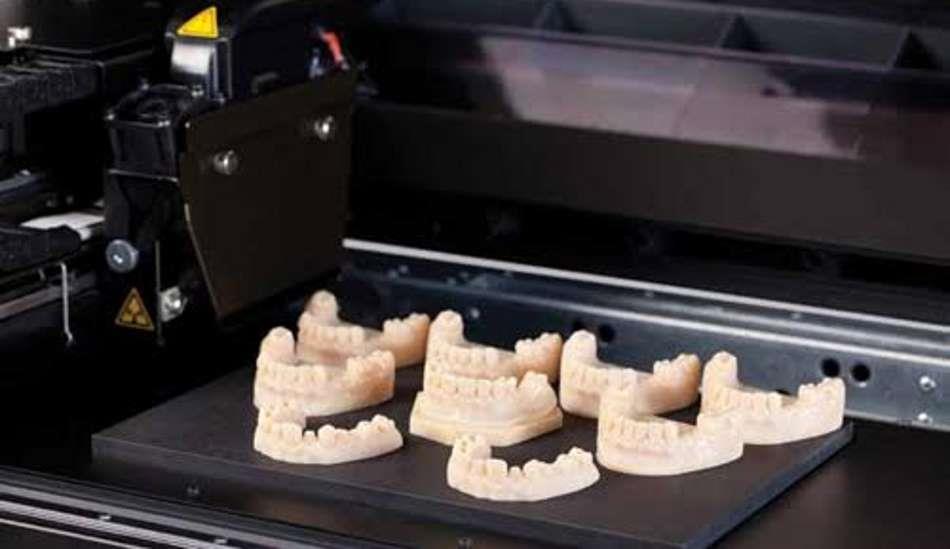 ABS has many colors making it a common production 3D printing material for making tickers and toys, jewelry, and vases.
ABS has many colors making it a common production 3D printing material for making tickers and toys, jewelry, and vases.
If you need a 3D printed filament and bother with choosing the materials between PLA vs ABS, check out the article on our website.
· Polycarbonate (PC)Polycarbonate/PC is a suitable plastic polymer for 3D printers with nozzle design at high temperatures. It is common in mass production as a result of its high strength, toughness, insulation properties, and heat and impact resistance. The material is suitable for making electrical and telecommunication products.
· Polyamide (Nylon)Polyamide or Nylon is a popular volume 3D printing material because of its strength, flexibility, and how it allows a high level of detail in printed products. The material is commonly used for printing products such as fasteners, toy cars, and figures.
ResinsResins are less common 3D printing materials due to their limited flexibility and strength. They reach their end state when exposed to UV light and have different color options. Below are the three categories of resin materials you could use:
They reach their end state when exposed to UV light and have different color options. Below are the three categories of resin materials you could use:
This type of resin has a smooth surface and provides intricate details on small models. They are the perfect materials for testing designs.
· Paintable ResinThese types of resin have aesthetic appeals making them suitable for making products with rendered facial details.
· Transparent ResinIt is the strongest of the three and suitable for many products. It is suitable for models that must have a smooth surface and transparent appearance.
MetalsThese are the second most popular 3D Printing materials. They are used through direct metal laser sintering (DMLS) or Selective Laser Melting (SLM). In 3D printing, metals are used in dust form. The dust is first heated to hardness in order to avoid casting. Consequently, it is possible to make direct use of the dust. Surface finishing process can then be undergone. Metals are common 3D Printing mass production materials due to their strength and durability, and common ones include:
The dust is first heated to hardness in order to avoid casting. Consequently, it is possible to make direct use of the dust. Surface finishing process can then be undergone. Metals are common 3D Printing mass production materials due to their strength and durability, and common ones include:
- Stainless steel: For a product that comes in contact with water.
- Bronze: For vases and other fixtures.
- Gold: 3D printed rings, bracelets, and other forms of jewelry
- Nickel: Coins.
- Aluminum: For thin 3D printed metals
Additive manufacturing is the industrial production name for 3D printing, which allows the creation of an object of varying complexity by making layers of the materials. In contrast to traditional manufacturing, they are efficient, effective, and reliable. Below are some additive manufacturing processes:
· Binder JettingBinder Jetting process uses a powdered material and a binder that acts as an adhesive to deposit a liquid binding agent onto powder particles, layer by layer. The additive manufacturing process has many industrial applications, such as aerospace parts, medical devices, automotive components, and more.
The additive manufacturing process has many industrial applications, such as aerospace parts, medical devices, automotive components, and more.
Direct energy deposition is compatible with many materials such as ceramics, metals, and polymers. The process involves melting materials and fusing them as it deposits. The mechanism is more common in repairing and rebuilding.
· Material ExtrusionIt is a common additive manufacturing process by which a heated nozzle extrudes the necessary materials. The bed moves vertically while the nozzle moves horizontally. Bonding agents or temperature control mechanisms can adhere to the layers formed to each other.
· Powder Bed Fusion (PBF)This is a metal additive manufacturing process. It takes advantage of either laser, heat or electron beam to melt or fuse powder materials together to form a solid three-dimensional part.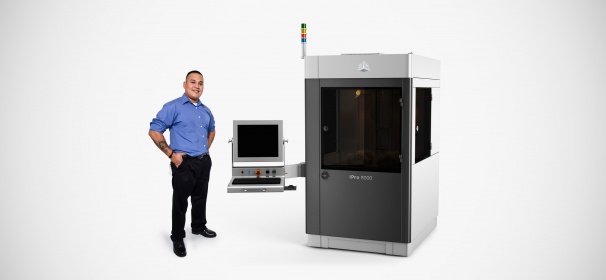
It comprises two methods. On the one hand, Laminated object manufacturing (LOM) is suitable for making products with alternate paper and adhesive having visual appeals. On the other hand, ultrasonic additive manufacturing (UAM) can join metals such as aluminum, stainless steel, and titanium using ultrasonic welding.
· Vat PolymerizationIt involves using a vat of liquid resin photopolymer to create an object layer by layer. Mirrors are then used to cure successive layers of resin through photopolymerization.
· Wire Arc Additive ManufacturingThis additive manufacturing process builds products using arc welding power sources and manipulators. The process is formally known as arc deposition, and it majorly uses wire as a material source.
Try RapidDirect Now!
All information and uploads are secure and confidential.
3D Printing for the masses is becoming a common term due to the advantages to businesses and consumers at large. Currently, there are many applications of the process. Below are a few you could gain insight from.
·
Adidas and Carbon: Mass Producing SneakersAdidas are using Carbon’s Digital Light Synthesis (DSL) technology to print lattice-like sole in about 20 minutes. DSL is ideal for making the lattice structure in the soles, which makes the sole comfortable, lightweight, and flexible. The structure also makes the shoe respond better to an athlete’s leg movement, thereby generating a better cushioning effect and stability.
·
Align Technology: Mass Production, 3D Printing, and PersonalizationAlign Technology has been able to combine personalization, mass production, and 3D Printing in making Invisalign made-to-measure aligners. The company uses SLA machines from 3D Systems to design the mold of the tray, which is completely tailor-made before being thermoformed.
·
Chanel: 3D Printing High-Tech Mascara BrushesIn 2018, Chanel, in collaboration with Erpro 3D Factory, made the Volume Révolution mascara brush. The product has been made on an industrial scale, with Erpro 3D Factory saying it has 3D printed 17 million parts since 2017 with 15 machines that work daily. Additive manufacturing was later introduced to reduce time consumption and cost, which improved the speed of production and the brush design.
·
Formlabs: 3D Printed COVID-19 test swabsAt the start of the Coronavirus pandemic, Formlabs made use of 3D Printing to make an autoclavable and biocompatible nasal swab. With 3D printing, they were able to produce at a rate that meets the country’s needs.
·
Photocentric: 3D Printing Valves to Fight the PandemicPhotocentric during the onset of the coronavirus pandemic also made use of 3D Printing in the mass production of valves compatible with breathing apparatus.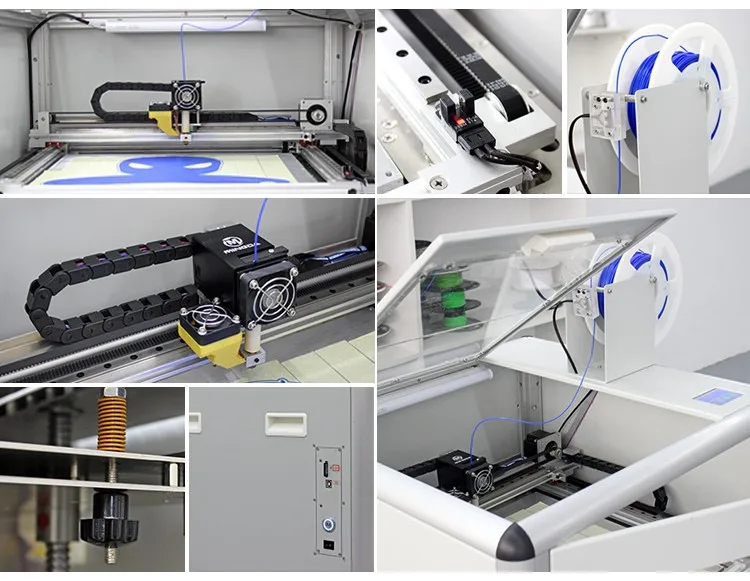 They made use of three 3D resin printers, which were able to print more than 600 valves in one night and 40,000 per week. This shows the ability of 3D printers to perform in terms of urgency.
They made use of three 3D resin printers, which were able to print more than 600 valves in one night and 40,000 per week. This shows the ability of 3D printers to perform in terms of urgency.
3D Printing is a rapid prototyping process known for its accuracy, ease of use, and ability to make complex products. 3D Printing uses mass production has reached the limelight with companies such as Adidas, Formlabs, and Chanel, etc., employing the process in their business to boost sales and reach a wider customer. From here, you will know the advantages of 3D Printing mass production in the modern world and how you can think like companies applying the principle in their business.
RapidDirect Custom 3D Printing Services3D Printing a product comes with knowledge of the process, and when you are looking for the best service, you can get the best at RapidDirect.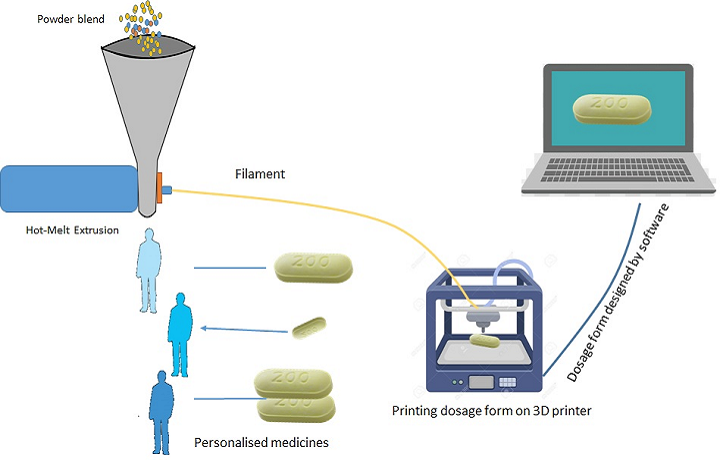 It does not matter whether it is mass production or singular prototypes. At RapidDirect, you have access to the best custom online prototype manufacturing services at a competitive price. Our team has a wide knowledge of 3D Printing and other rapid prototyping processes. Get an instant quote by uploading the files.
It does not matter whether it is mass production or singular prototypes. At RapidDirect, you have access to the best custom online prototype manufacturing services at a competitive price. Our team has a wide knowledge of 3D Printing and other rapid prototyping processes. Get an instant quote by uploading the files.
Get an instant quote
FAQIs 3D Printing expensive for mass production?
Unlike other methods, 3D Printing is more affordable for low volume production. It is also cheaper for high-volume production. Also, it does not require a start-up cost, unlike injection molding.
Is 3D Printing faster than manufacturing?
Yes, 3D Printing is faster than most traditional and rapid prototyping processes. For example, when compared to injection molding, there is no need to create injection molds which are important for the molding process.
Can 3D Printing be Used for Mass Production?
Yes, 3D printing is a suitable method for making products in mass. Its use can be based on its methods or based on helping designers use another rapid prototyping process effortlessly and less costly (e.g., it is suitable for making injection molds used in injection molding). 3D Printing mass production is now common in companies such as Adidas, Chanel, etc.
3D Small Batch Printing, Batch Printing 3D Printing Batch Printing
It goes without saying that 3D printing is a very efficient and precise way of making objects. Even an entry-level 3D printer (Fusion Deposition Printer) is a great and affordable design and prototyping tool that you can easily use in the privacy of your own home, so it's no surprise that these printers are growing in popularity every year.
However, 3D printing technology is still hardly used for the production of hot goods.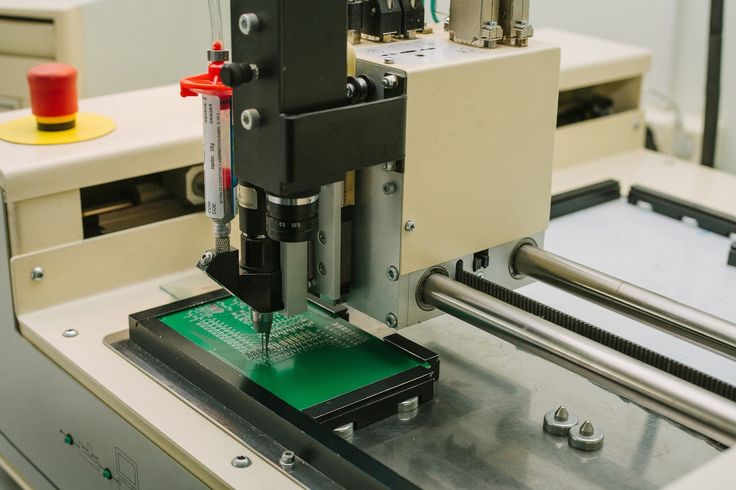 Of course, some organizations are already showing a small production initiative (check out Shapeways, for example), and several large companies have moved to operate Stratasys industrial-grade 3D printers. However, the vast majority of plastic products are still made using the (age-old) injection molding methods that have become the gold standard for mass-produced plastic parts almost from the beginning of their introduction (since 1872).
Of course, some organizations are already showing a small production initiative (check out Shapeways, for example), and several large companies have moved to operate Stratasys industrial-grade 3D printers. However, the vast majority of plastic products are still made using the (age-old) injection molding methods that have become the gold standard for mass-produced plastic parts almost from the beginning of their introduction (since 1872).
Why? Most experts will answer that 3D printing technology is too expensive to compete properly with more established production methods. But is it really so? Recently, an official report was published claiming that 3D printers are theoretically capable of outperforming injection molding methods by a small margin.
Of course, this does not mean at all that your own desktop 3D printer is capable of competing with the mainstream industrial companies, as these promising results are only achieved under very specific conditions.
Volume is the key factor. To achieve the desired results, 3D printing farms are used: “production sites” consisting of numerous affordable and inexpensive 3D printers working in synchronous mode to produce plastic products in large volumes (up to 10,000 objects). Through efficient setup, smooth operation, and other specific conditions, these printers have proven to be able to outperform injection molding methods in terms of complexity, speed, and cost.
To achieve the desired results, 3D printing farms are used: “production sites” consisting of numerous affordable and inexpensive 3D printers working in synchronous mode to produce plastic products in large volumes (up to 10,000 objects). Through efficient setup, smooth operation, and other specific conditions, these printers have proven to be able to outperform injection molding methods in terms of complexity, speed, and cost.
Thus, it is not without excitement to assume that this approach can lead to a new era in the production of plastic products. Just don't misunderstand this saying: there are still a lot of rough spots in 3D printing that need to be ironed out, but it can be noted that a new era of volumetric manufacturing is dawning, when products are customized to the desire of the user and customer.
This 3D printing truss has proven to be suitable for optimizing production performance for batch sizes up to 1000 units, a range traditionally considered problematic for industrial production. One of the basic laws in manufacturing is that the larger the batch, the lower the cost per unit, and this is especially true for plastic objects. Injection molding techniques require expensive investments, and iteration and innovation costs can become unacceptably high for small batches.
One of the basic laws in manufacturing is that the larger the batch, the lower the cost per unit, and this is especially true for plastic objects. Injection molding techniques require expensive investments, and iteration and innovation costs can become unacceptably high for small batches.
This is where the new 3D printing trusses come in handy. Not only are they able to produce objects at a fairly high speed (10-20 times faster), the investment in production is also significantly lower: you can buy about twenty 3D printers for the price of one injection molding system. This allows manufacturers not only to achieve higher rates of production growth and more efficient use of labor resources, but also provides more opportunities for innovation and improves resistance to bankruptcy.
The test was carried out on desktop 3D printers, which were theoretically originally developed for small production runs. The promise of 3D printing farms is based on the use of networking and wi-fi capabilities, high production volume and cost-effective modular design: when these aspects are combined together, they are a powerful combination.
All this is very interesting and promising, but, as the survey data show, at present the differences are minimal. The graphs below represent data that comes from a study of three different types of 3D printers, one external 3D printing service, and one type of injection molding production system. It is assumed that the machines have already been purchased (which is reflected in the price of each lot). The calculations are based on a sample of three different batches.
As shown in the graphs, the desktop printer (blue) can, under special conditions, outperform the injection molding system in all respects. Although the advantage is noticeable only in the lower range of production volumes, but, as expected, the differences, unfortunately, become minimal as batch sizes approach the 10,000th mark.
It's no surprise that 3D printing outperforms injection molding at volumes below 100 pieces. All classes of layering production are significantly more profitable in this range (when calculating the cost of one product) than injection molding methods.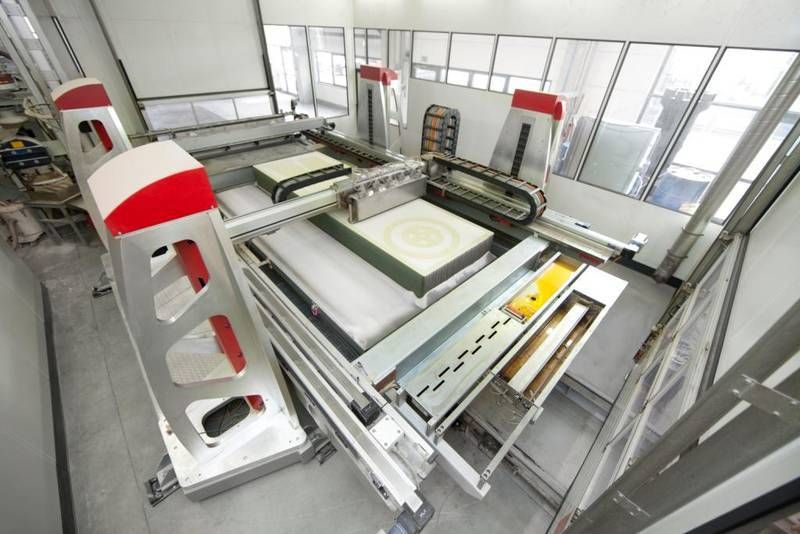 However, the much higher capital costs of such industrial-grade systems mean that they are no longer competitive (price) at 100 to 200 unit batches.
However, the much higher capital costs of such industrial-grade systems mean that they are no longer competitive (price) at 100 to 200 unit batches.
However, it is worth paying attention to the differences between the trends: blue - desktop 3D printer in special conditions and red - in normal conditions. After increasing production to 800 units, 3D printing is no longer able to compete under normal conditions. Only when twenty printers are running under the supervision of a single operator, during "unmanned" operation, can 3D printing theoretically continue to compete with traditional manufacturing methods. However, when the volume of production exceeds 10,000 units, even this advantage disappears (at the same time, it can be rightly expected that the largest industrial companies overcome this number with ease).
Even when operating under optimal conditions, 3D printing on a large production scale is clearly not able to unseat injection molding methods. But, nevertheless, the results are very impressive: they are much better than what was predicted by the majority.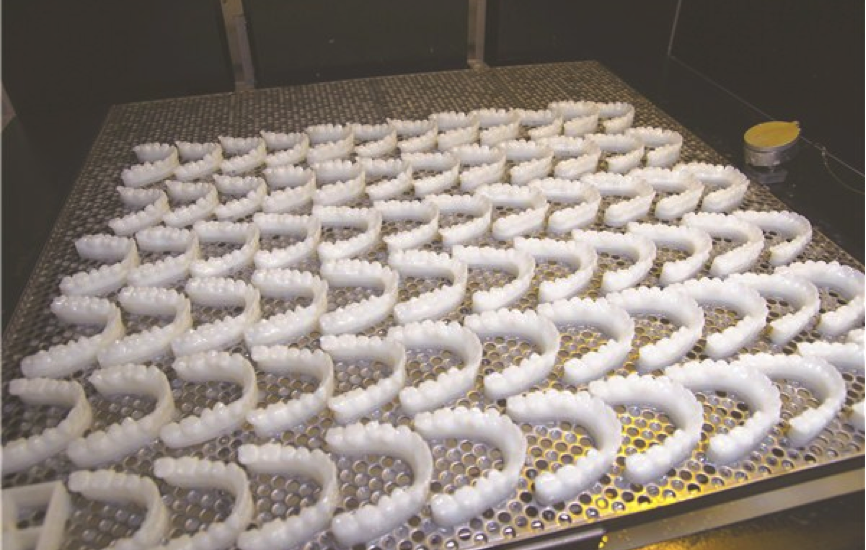
And they become even more impressive when you take into account other advantages of 3D printing technology. Not only is it faster manufacturing speed, 3D printing with multiple printers increases customization and modification options. In injection molding, these aspects increase the cost of production dramatically. And, of course, 3D printing allows you to obtain products with a level of geometric accuracy that is very difficult to achieve using traditional production methods.
Finally, 3D printing technology is constantly improving: new innovations, optimization opportunities are offered monthly. In the coming years, this should give 3D printing technology additional benefits. This means that FDM printers are still too early to write off.
So back to the original question: does 3D printing technology constitute a viable and affordable alternative to injection molding methods? The answer, as suggested by this study, is almost yes. While traditional fabrication methods are still the best option for mass production, fused deposition 3D printers are quite capable of competing or even surpassing them in small batches (1000 objects).
Why mass 3D printing is still not a trend However, personification has not yet become a popular phenomenon. Is this idea promising for business development?
When there was an acute shortage of personal protective equipment (PPE) for doctors, the owners of 3D printers united in the volunteer movement #3Dfor doctors. They began to print adapters, which made it possible to connect diving masks with virus-bacterial filters. Manufacturers were able to quickly develop and release adapters in various configurations for popular types of masks found in stores, quickly covered burning needs and saved many lives - and then began to make full-fledged protective masks and shields.
Adapters for masks - example of a customized product (made to order. - RBC Trends ), that is, adapted to different types of masks. How quickly manufacturers were able to design and release a new product with unique characteristics demonstrates the main advantages of 3D printing.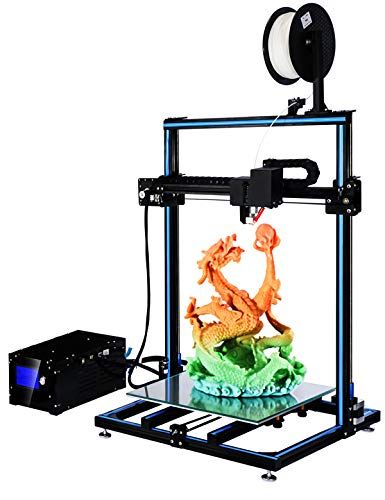
3D printing allows you to create products based on the preferences or personal characteristics of the buyer - personalized goods. This idea arose in the early 2000s, but so far, contrary to forecasts and the rapid development of additive technologies, has not become a mass phenomenon.
Personalization Challenges
Since 2012, Nike and Adidas have been experimenting with 3D printing in the production of sneakers. The goal is to create sports shoes in the presence of the buyer according to the individual characteristics of his foot. For example, Adidas announced in 2015 that a consumer could walk into a store, spend a couple of minutes on the treadmill, and immediately receive a printed pair of running shoes that take into account the contours of the foot and pressure points while running. At the same time, Nike announced the possibility of printing shoes directly at the customer's home. To do this, you just need to download the file with the parameters of the sneakers and the characteristics of the foot from the corporation's website to your home 3D printer.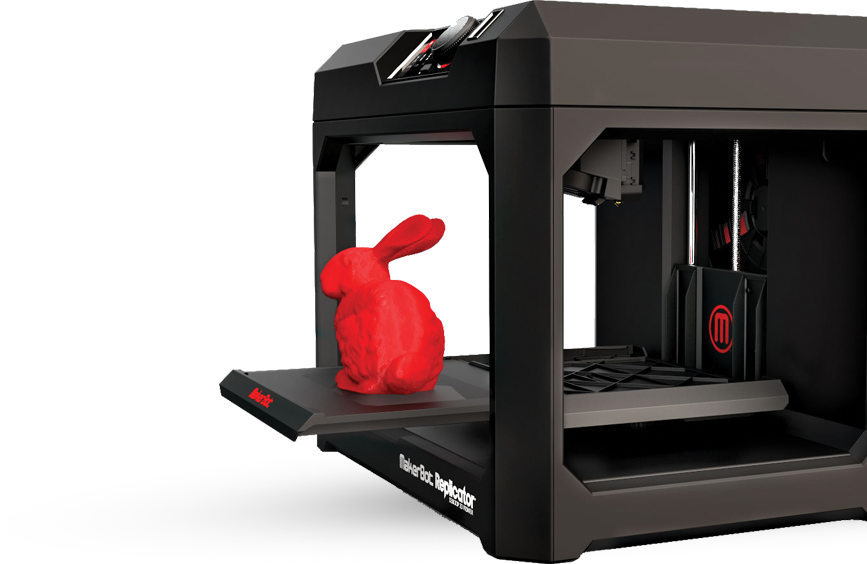
However, by 2020, these opportunities remained unrealized. In practice, everything turned out to be more difficult.
The point is the high cost of such products: the consumer is not ready to pay for customized sneakers many times more expensive when you can choose the right model from thousands of more affordable options.
Customization does not take root among automakers either. For example, in 2017, BMW launched the MINI Yours Customized service, which allows you to customize a new or previously purchased MINI car using decorative elements printed on a 3D printer. For example, it was possible to order individual side body inserts, trim parts, LED door sills and LED door projectors. However, the service is currently unavailable.
Where personification has taken root
So far, 3D printing is most actively used in medicine, where it is vital to take into account the individual characteristics of a person.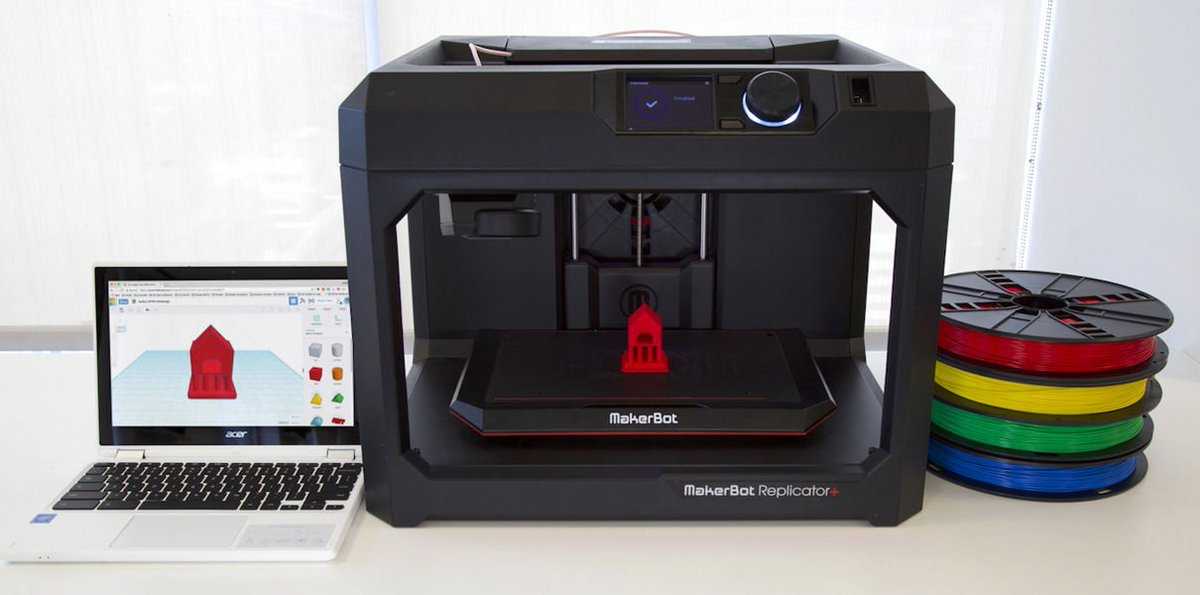 First of all, the technology is useful in orthopedics and dentistry for the manufacture of prostheses and implants. Customization is especially in demand in the production of prosthetic limbs. With the help of 3D scanning, the parameters of the patient are determined, a digital model of the prosthesis is created, which is printed on a 3D printer. In this case, you can create a unique design of the artificial limb. For example, they produce children's prostheses stylized as favorite movie characters.
First of all, the technology is useful in orthopedics and dentistry for the manufacture of prostheses and implants. Customization is especially in demand in the production of prosthetic limbs. With the help of 3D scanning, the parameters of the patient are determined, a digital model of the prosthesis is created, which is printed on a 3D printer. In this case, you can create a unique design of the artificial limb. For example, they produce children's prostheses stylized as favorite movie characters.
Another area where 3D printing is being used to customize products is in the jewelry and fashion jewelry industry. There are enterprises that produce mass products using 3D printing, for example, the American brands LACE, Nervous System and others. Customization is carried out, first of all, by small studios and workshops offering exclusive jewelry. They print digital models created according to customer sketches or cast them from precious materials using 3D printed molds.
Economics of innovation Living hand: who creates bionic prostheses in Russia
As for the majority of goods, the price works here in 99% of cases. Especially when the share of online sales is growing. You type in Google "buy a fountain pen is the cheapest" - and no matter where you are, you buy this fountain pen cheaper. This is where mass production wins.
You can think of many products that could be customized. But you need to be clear about who you will sell them to. Are there enough people willing to overpay for customization to keep your business alive? “In your calculations, you need to take into account real consumer demand, and not the desire to make money on hype,” says Vlasov. “The conclusion is simple: personalized production is possible when it will give approximately the same price as mass production.”
Denis Alekseev, Head of Development and Production at ROBBO JSC (educational robotics, Skolkovo resident), is confident that personalized production will become a popular trend of the future. But in order to attract the mass consumer to this segment, it is necessary to overcome a number of technical and organizational issues. For the end user, the process of ordering a customized product should be as simple as possible: with a few steps, order what he wants, while receiving the finished product quickly and conveniently. The cost of individual products may be higher, but this increase must be of value to the customer.
But in order to attract the mass consumer to this segment, it is necessary to overcome a number of technical and organizational issues. For the end user, the process of ordering a customized product should be as simple as possible: with a few steps, order what he wants, while receiving the finished product quickly and conveniently. The cost of individual products may be higher, but this increase must be of value to the customer.
Main disadvantages of 3D printing:
-
low production rate;
-
often low quality products;
-
high cost of the product when trying to mass production.
How to reduce the cost of a customized product?
The cost of the finished product primarily depends on the materials for 3D printing. One way to cut costs is to produce consumables yourself.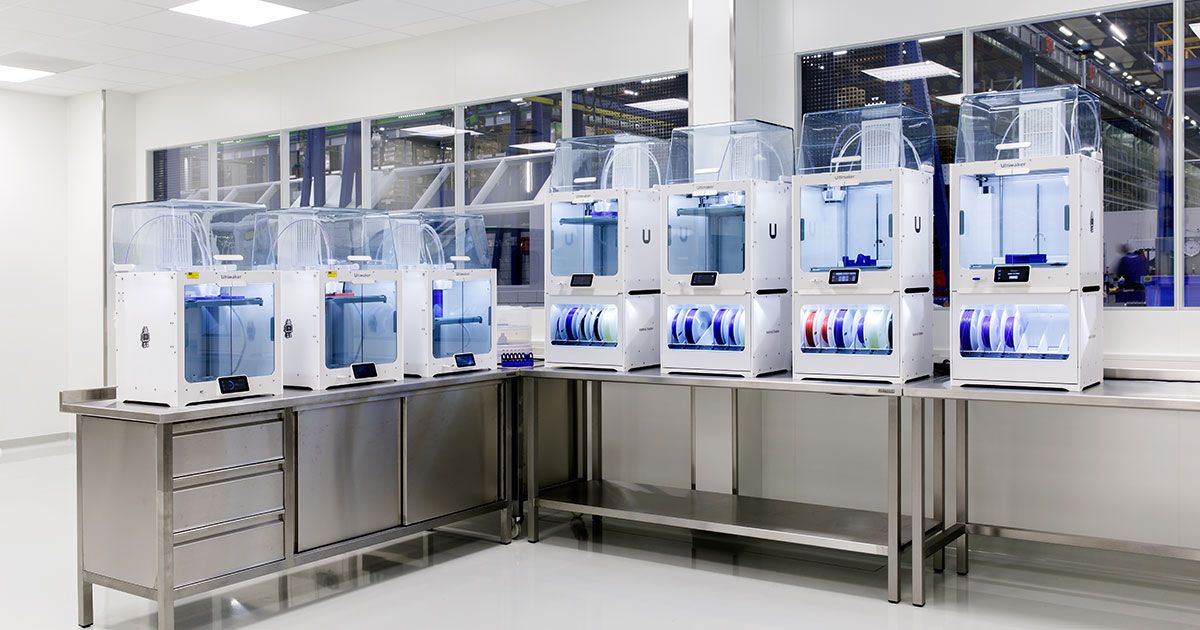
Another option to reduce the cost of consumables is possible with the development of additive technologies and the development of new materials for printing.
The main question is: who will buy it?
Entrepreneurs who will find the answer to the question: who will buy them will be able to develop the production of personalized goods? Businesses that already operate in a particular market and feel the needs of their audience can feel the demand. It is almost impossible to guess - you need to be sure of the demand.
Artur Gerasimov notes that small-scale production is promising for business development using additive technologies. One of the areas of work of his company Innovax is the production of parts and mechanisms by order of industrial enterprises from the automotive industry, instrument making, and the aerospace industry.
The customization boom will occur when a customer can get a personalized product at the same price and as quickly as a mass product.